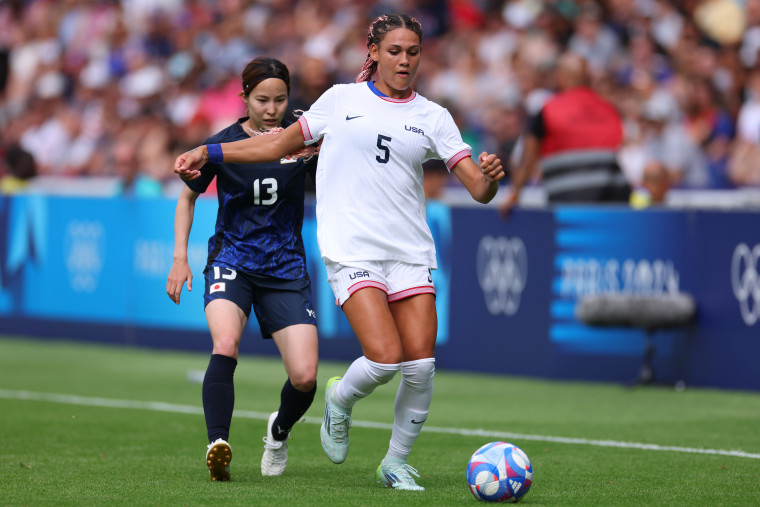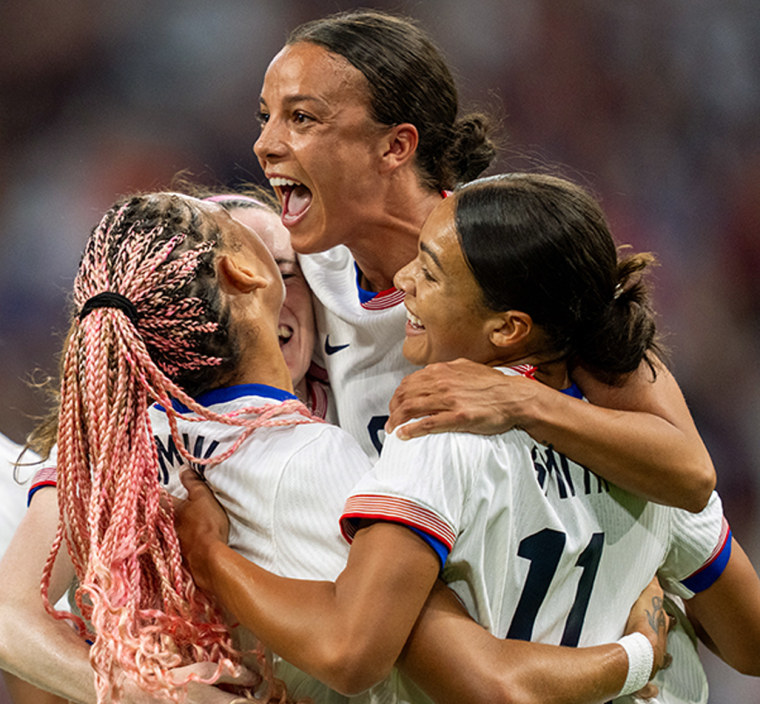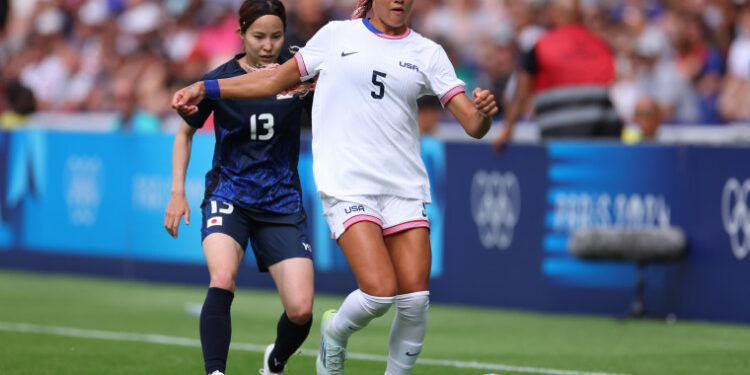The U.S. women’s national soccer team is looking to continue its undefeated streak at this year’s Olympics as the squad prepares for a second match against Germany in the semifinals.
It may feel like another Tuesday for the American women, as the team has not lost to Germany in an international tournament for two straight decades. That’s especially true of the 2024 Paris Games as the U.S. clobbered the European team in a 4-1 game in the group stage.
Nothing can be ruled out at the Olympics as the hunger for national glory has been known to bring dramatic upsets, but the U.S. women’s team certainly walks in with an edge.
Though the squad struggled to break through Japan’s defense in the quarterfinals on Saturday morning, a single goal by forward Trinity Rodman, 22, in extra stoppage time sailed the women into the next round.
She became the youngest player on the women’s squad to score in extra time in a knockout round at the Games since the 2004 Athens Olympics.

Rodman, along with Sophia Smith, 23, and Mallory Swanson, 26, have been a defining feature of this new era of the U.S. women’s national team so far. Fans started to call them “The Big Three” after they scored a majority of the team’s goals in the group stage.
For the naysayers of new head coach Emma Hayes, these women have put many doubts about Hayes’ choices to rest.
While Swanson is a team veteran, Smith and Rodman are both making their Olympic debut this year and carry the weight of Hayes’ somewhat controversial investment in younger players.

It’s been a rough few years for the national team as they have gone five years without a major international trophy and some of its beloved favorites have retired. Hayes’ decision to go into the Olympics with a team that has an average age of 26.8 years old has rankled many fans. Notably, the exclusion of 35-year-old Alex Morgan drew ire as Morgan became one of the team’s leading scorers during its troubled times.
But Hayes has chosen to put the younger players up front — quite literally, given that “The Big Three” are all forwards. There are of course still veterans on the team helping to guide the way such as Lindsay Horan, 30, Crystal Dunn, 32, and Rose Lavelle, 29.
Lavelle in particular has played excellently throughout the Olympic tournament, covering the pitch relentlessly in her midfielder role. She told reporters after the last game against Germany that the players were finally beginning to connect as a team.
“We’re playing with more structure and discipline, and then I think we’re having fun too,” Lavelle said.
Now that the American squad has reached the semifinals, the team also has the added benefit of a reset on prior players’ fouls. That means that Samantha Coffey, who had to sit out the game against Japan, will be allowed back on the field after receiving two yellow cards in the group stage.
The 25-year-old midfielder was replaced in the quarterfinals by Korbin Albert, who only recently joined the national team and scored her first international goal in the group stage. Coffey is also relatively new to the squad but made an outstanding impression in the group stage before the cards forced her out of the game.
Hayes said Monday that “everyone is training,” including defender Emily Fox after an injury in the quarter-finals.
Fans will be looking to see if the women can continue to play with the same level of controlled offensive aggression that allowed them to dominate early in France. Winning against Germany would guarantee at least a silver medal as the team moves into the final match.
The only other time the women’s national team has gone undefeated at the Olympics was in 2012, which was also the last time the team won gold at the Games.







